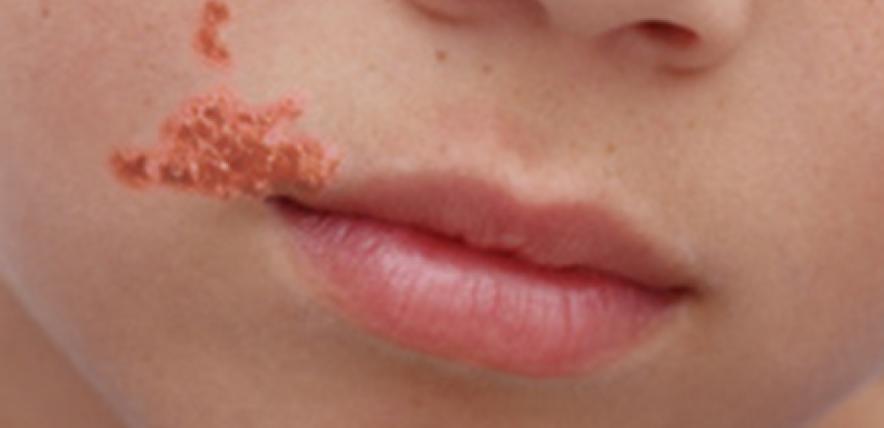My child has been diagnosed with impetigo. What is this and how did they catch it?
Impetigo is another of those highly contagious diseases that is common among children. It affects the skin and is caused by one of two types of bacteria – the staphylococcus or streptococcus pyogenes.
Generally speaking impetigo is not dangerous, though it can spread to deeper layers of skin causing cellulitis and to the lymph nodes, which causes lymphangitis.
Impetigo occurs in two main ways. Non-bullous impetigo starts with red sores around the nose, mouth and possibly other areas of the face, and may also appear on the arms and legs. These can be itchy but are not usually painful. It is important not to scratch them so the infection doesn’t spread. Sometimes impetigo might lead to a fever and swollen glands but this is rare.
When the sores burst they leave golden crusts which look a little like cornflakes stuck to the skin. Once these have dried then can leave a red mark for a few weeks, but scarring is unusual.
The other type of the disease is known as bullous impetigo which begins with fluid-filled blisters, known as bullae, and can be found between the neck and waist, or on the limbs. These blisters can measure up to two centimetres across. The blisters may spread but they burst after a few days and then dry up to leave a yellow crust. As with non-bullous impetigo they can be itchy but should not be scratched. Children suffering with bullous impetigo are likely to suffer with a fever and swollen glands.
What causes impetigo and how is it spread?
The bacteria that cause this disease can infect the skin in two ways. It may be through a break in otherwise healthy skin, such as a scratch or insect bite, or through skin which has been damaged by another underlying skin condition, for example, eczema or scabies.
It spread through touching someone who has the infection, and young children playing in a pre-school setting may be particularly vulnerable because of close physical contact. Often people don’t know they have impetigo because it doesn’t cause symptoms for four to 10 days after exposure to the bacteria, but it is still contagious. Children with diabetes or a compromised immune system are particularly at risk of impetigo.
How do I treat impetigo?
If you’re worried your child has impetigo speak to your GP, who may be able to prescribe treatment to help clear up the infection quickly. It will normally clear up on its own untreated in about two or three weeks but doctors recommend treatment as this lessens the chances of infection being spread to others. Your GP will usually prescribe an antibiotic cream or tablets if impetigo is confirmed.
More people are no longer contagious within 48 hours of treatment but to be on the safe side you should take a few precautions. Keep your child at home until the sores have dried or healed and make sure they wash their hands frequently. Don’t share flannels, towels or bed linen, and washable toys should be washed. Other toys should be wiped with a cloth that has been wrung out in warm water and detergent.
Keep their finger nails short to stop them from scratching and cover itchy sores loosely with a gauze bandage. They should also avoid contact with new born babies or sharing food until the risk of infection is passed.
If your child has recurring impetigo, or doesn’t respond to treatment, the GP may decide to do further tests or refer your child to a dermatologist. It is possible that the bacteria that causes impetigo is present in your child’s nose and this may need treating with an antibiotic cream.
Read more about impetigo at Net Doctor or NHS Choices
Written by Dorothy Lepkowska for the Alliance
This article is for information purposes only and should not be used as a substitute for professional medical help. If you or your child is unwell you should consult a medical professional.
Want more articles like this?
Subscribe to the free monthly Family Corner e-newsletter
for articles on your child's development, activity ideas and more!
We won't share your details with third parties and you can unsubscribe at any time.







